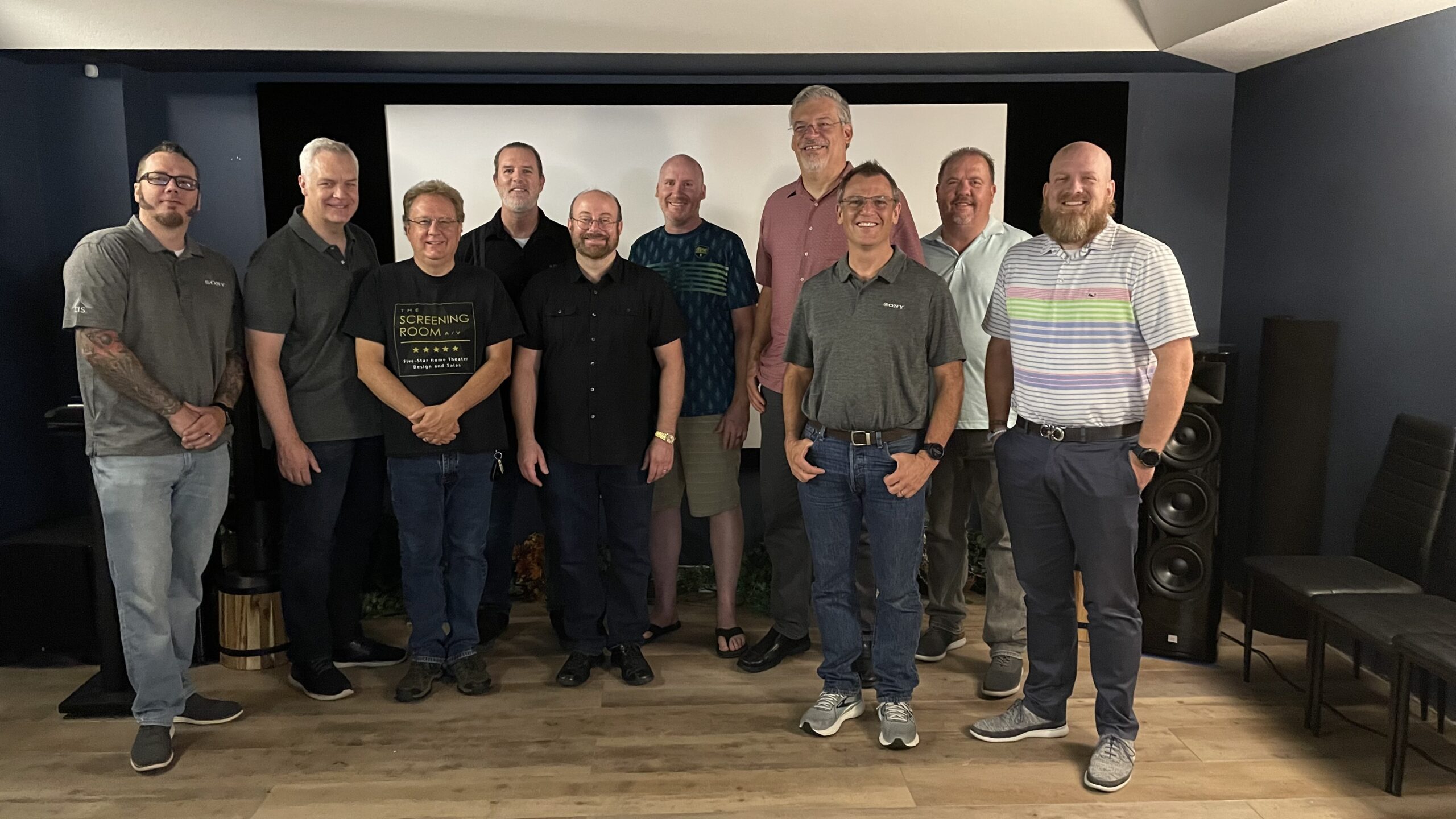
From left: Russell Warnhoff (Sony), Dave Carty (TSR), John Schuermann (TSR Owner & Founder), Steve Crabb (TSR), Craig Rounds (CIR Engineering), Kris Deering (Deep Dive AV), Chris Deutsch (JVC), Andrew Turner (Sony), Robert Budde (JVC), Matt Scarborough (Kaleidescape)
What is calibration?
cal·i·bra·tion .: the act of checking or adjusting (by comparison with a standard) the accuracy of an instrument.
Simply put, to calibrate a display device adjust it such that it meets industry standards to its highest possible extent. Extensive electronic and mechanical adjustments are made, going well beyond what a lay person would be able to do on their own. If you would like more concrete details on my exact procedures, I encourage you to explore my web page further.
So why do these nice displays benefit from a calibration in the first place? There are two distinct answers to this.
First, the settings needed to make a display device have an appealing image on a showroom or tradeshow floor are completely different from those needed for the same display to look good in your theater or living room. For example, manufacturers commonly may adjust displays to be overly bright and have too much red. Under fluorescent lights and next to other displays, the miscalibrated picture will stand out and seem better to you. However, in a more controlled environment the picture just doesn’t look natural: people’s faces appear sunburned due to the excessive reds, for example.
Second, displays require a break-in period, during which the picture changes dramatically. It can take up to a few hundred viewing hours before the picture “settles in” and remains constant for a long period of time. This actually makes it impossible for manufacturers to properly set displays up in the factory even if they wanted to. No matter what a manufacturer does, there is just no way for them to get it right.
If you care about your display’s image calibration is simply an essential step for any display device.